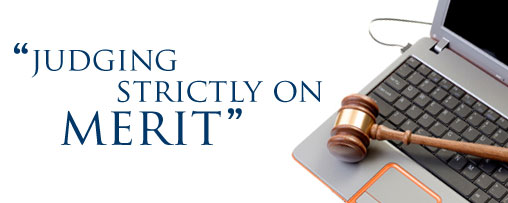Eliminating redundancies
By Judge Mark P. Painter
|
Redundancies add words without adding meaning, cluttering up our writing. Remember that the goal is to use as few words as possible without losing meaning. Use the words you need to make the meaning clear, but no more. The legal redundancies that resulted from the Norman Conquest – will and testament, null and void, free and clear, give and devise, and others of that ilk – were the subject of a previous column (“Legalese leads to losing argument,” Lawyers USA, April 11, 2005. Search words for Lawyers USA Archives: Painter and Kohlbrand). Never use them. But we use many others – the garden-variety redundancies that creep into our writing – such as the usual example of very unique. Since unique means one of a kind, there can’t be any degrees. We use more of these than we might think. I have seen all the ones in the chart below more than a few times. Euphemism issues Shun euphemisms. If people die, they died. They didn’t pass away, or pass on, or even worse, expire. (Do we all have an expiration date?) A tax increase is just that – not a revenue enhancement. A euphemism is a less harsh term for something we don’t really want to talk about: collateral damage, instead of civilian deaths, correctional facility for prison. And toilet paper has morphed into bathroom tissue. The simple concept of a lie is now a fabrication, or erroneous information, or disinformation. One of my favorites is how lawyers describe their clients’ thefts: they just misappropriated the money. Sounds like a simple bookkeeping error. Not all euphemisms are bad – sometimes a new word for something is better. Mentally challenged sounds kinder or more accurate than mentally retarded. But eschew extending challenged to the mundane: our vertically challenged candidate, the follicly challenged newsreader. If a new word helps, use it. But most are just silly, such as in the new government term for hunger. Hunger has been euphemized. The United States Department of Agriculture (USDA) has started to purge hunger from America. A noble goal, although there will still be as many hungry Americans. But they have been redefined as lacking in food security. Maybe terrorists are blowing up the broccoli? Should we lock up the lima beans? Food insecurity is a euphemism; it’s also jargon of the worst kind – bureaucratic doublespeak. I’m not making this up. A panel of “experts” in hunger food insecurity has studied the issue for the USDA. I downloaded the quotation below directly from the USDA website. (It was not easy to find – the headline on the website was that four people had been appointed to the Peanut Board.) The experts, after no telling how long and at what cost, have come up with, among others, these recommendations: Recommendation 3-1: USDA should continue to measure and monitor food insecurity regularly in a household survey. Given that hunger is a separate concept from food insecurity, USDA should undertake a program to measure hunger, which is an important potential consequence of food insecurity. Recommendation 3-2: To measure hunger, which is an individual and not a household construct, USDA should develop measures for individuals on the basis of a structured research program, and develop and implement a modified or new data gathering mechanism. The first step should be to develop an operationally feasible concept and definition of hunger. Recommendation 3-3: USDA should examine in its research program ways to measure other potential, closely linked, consequences of food insecurity, in addition to hunger, such as feelings of deprivation and alienation, distress, and adverse family and social interaction. Recommendation 3-4: USDA should examine alternate labels to convey the severity of food insecurity without the problems inherent in the current labels. Furthermore, USDA should explicitly state in its annual reports that the data presented in the report are estimates of prevalence of household food insecurity and not prevalence of hunger among individuals. Running a test of readability on the above gem, it comes in at a grade level of 18.7 – people who have had 18.7 years of formal education should be able to understand it. That means a doctorate. Being the proud owner of a doctorate, I should understand it, but I don’t. Are they trying to say that hunger affects people not households? So, in the last paragraph, household food insecurity doesn’t mean the people in the household are hungry? It also says something similar in the second paragraph. Paragraph three talks about measuring problems of food insecurity. I guess we would expect adverse family and social interaction if people do not have enough to eat. Most Americans are food secure – we have plenty to eat. We are so secure that obesity is a major problem. But according to the same USDA, there are still 35 million Americans who are sometimes hungry – they do not have enough to eat – and they should not be euphemized away. Readability I always show the readability scores for the column. Statistics for this column (excepting the quotes, of course, which are unintelligible): 13 words per sentence, 7 percent passive voice, and grade level 9.3. ____________________________________ Mark Painter has served as a judge on the Ohio First District Court of Appeals for 11 years, after 13 years on the Hamilton County Municipal Court. Judge Painter is the author of The Legal Writer: 40 Rules for the Art of Legal Writing. It is available from http://books. lawyersweekly .com. Judge Painter has given dozens of seminars on legal writing. Contact him through his website, www.judge painter.org. |








